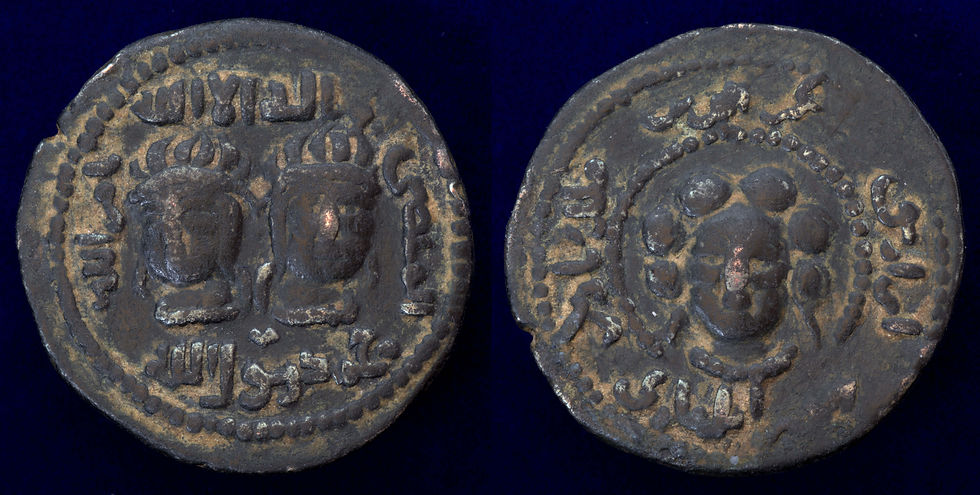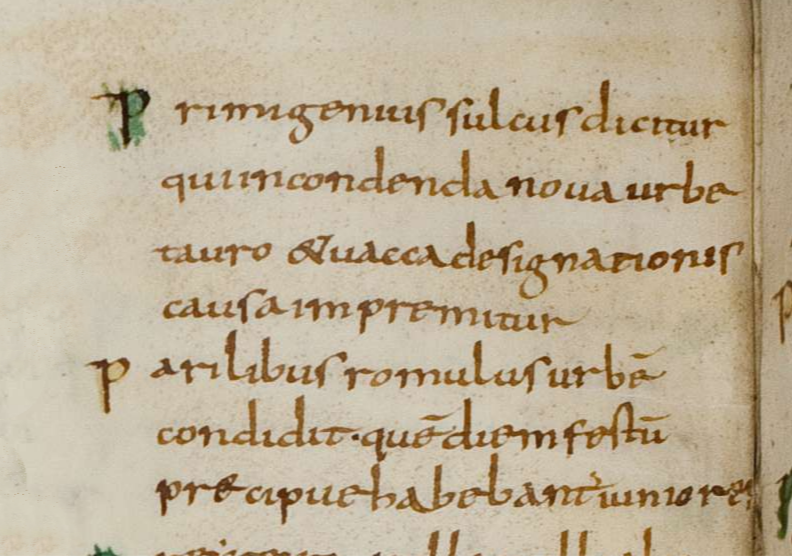Saturnalia Gift
- sulla80

- Dec 17, 2024
- 4 min read
Updated: Mar 2

Saturnalia is December 17th. I was excited to open up a Saturnalia gift that arrived in my mailbox last week. The gift is from a group gift exchange and is from the owner of JAZ Numismatics from whom I have purchased and with whom I have sold off duplicates and coins that no longer fit my collection.
Saturnalia was an ancient Roman festival held in honor of the god Saturn, the god of agriculture, wealth, and time. It was one of the most popular and widely celebrated holidays in the Roman calendar, marked by feasting, gift-giving, and role reversals between masters and slaves. The festival typically began on December 17th and later expanded to last up to seven days, ending around December 23rd.

Saturnalia & Christmas
Scholars believe that aspects of Saturnalia influenced the development of Christmas and New Year's celebrations in later Christian culture. The gift-giving, feasting, and sense of merriment are seen as precursors to modern holiday customs. Saturnalia is one of the most well-documented and colorful festivals of the Roman world, embodying the spirit of renewal, excess, and social transformation.
For a more comprehensive documentation on Saturnalia see: William Smith, D.C.L., LL.D.: A Dictionary of Greek and Roman Antiquities, John Murray, London, 1875.
A Thoughtful Gift of Coins
The thoughtful gift includes two coins, one from the Artuqids of Mardin (12th Century CE) which appeals to my interest in both medieval Islamic and Anatolian coins. The second coin an Indian Head Cent - a coin that reminds me of my mother's childhood collection of Indian Head pennies that fascinated me as a child and was my introduction to coin collecting. Both of my parents collected coins - my father also had a collection that included large US Morgan and Peace silver dollars and a few other coins. The Indian Head Cent is from 1906 around the time of my mother's father's birth.

The Artuqids of Mardin
The Artuqids of Mardin (1106–1409) were a Turkoman dynasty that ruled over parts of Upper Mesopotamia (modern-day southeastern Turkiye, northern Syria, and parts of Iraq) from the 11th to the 15th century. The dynasty was a branch of the larger Artuqid family, which initially served as vassals of the Seljuk Empire but later established independent rule in Mardin and Hasankeyf.
he Artuqid coin was issued by Najm al-Din Alpi (r. 1152–1176 CE), an Artuqid ruler of Mardin in Upper Mesopotamia (modern-day southeastern Turkiye). He is known for his role in consolidating Artuqid control over Mardin, stabilizing the region, and acting as a patron of architecture, culture, and Islamic scholarship. Najm al-Din Alpi's reign is seen as one of the more stable and culturally rich periods in the Artuqid dynasty's history.

Islamic, Anatolia & al-Jazira (Post-Seljuk). Artuqids (Mardin). Najm al-Din Alpi, AH 547-572 / CE 1152-1176. Dirhem (Bronze, 31mm, 11.29 g, 12h), Mardin(?), c. AH 566-572 / CE 1170-1176.
Obv: (simple Kufic script) Two diademed and draped male heads facing slightly away from one another; Kalima above and below, name of Abbasid caliph al-Mustadi and the title (بأمر الله bi-amrillah translates to "By the command of God") to right and left .
Rev: (a cursive that is Naskhi-like) Facing female head wearing necklace; name, title, and ancestors of Najm al-Din Alpi around. Ref: Album 1827.5. S&S Type 30.2. Whelan Type IV, p. 85.
Notes: Well struck and nicely centered on a large flan with some encrustations. Fine/Very Fine. This coin is in the typical range for weight: 11-13 grams with the full spectrum going form 8.53-15.3g.
Relationship with Baghdad
There are two coins of this type - that reference different Abbasid Caliphs - this one is the later one that mentions al-Mustadi, I did not have an example of this coin in my collection. The earlier coin (shown below) mentions Abbasid caliph al-Mustanjid and is the first coin of the Artuqids of Mardin to mention the Abbasid caliph, which Spengler & Sayles mention as suggesting "a strengthening of relations between the Artuqid rul;ers of Misn Kayfa and of Mardin with the Caliph in Baghdad at this time".
Al-Mustadi (Abu Muhammad al-Hasan ibn Yusuf al-Mustanjid) was the Abbasid caliph who ruled from 1170 to 1180 CE. He succeeded his father, and may have played a role may have played a role in deposing and assassinating his father, al-Mustanjid. Al-Mustadi was caliph of the Abbasid Caliphate, which was based in Baghdad, Iraq. His reign is noted for administrative reforms, and attempts to consolidate Abbasid authority.

Astrological Reference
The imagery on this coin suggests an astrological reference of the female head as Virgo and the mail heads as Gemini with the planet Mercury having Day House or domecile of Gemini and Night House of Virgo.

"… In this celestial pattern, there are movements, and the form of the stars can be observed. These heavenly wonders show their place in the divine wisdom and align in their fixed positions. It is said that the constellation Gemini (Hamal) and its influence are of significance. It is with the guidance of the stars and planets that we determine fate, moments of action, and wisdom. Knowledge of these heavenly bodies leads one to gain deeper understanding and unveil the secrets of the universe. The movement of the heavens is fixed and constant, and in its design lies perfection. From this understanding comes reverence for the Creator, and gratitude fills our hearts."
-Wonders of Creation, Muhammad ibn Mahmud Tusi (12th century) a Persian version of the famous 'Aja'ib al-makhluqat (Wonders of creation) by Zakariya' al-Qazwini (died 682 AH/AD 1283) from p268. Images with thanks to the Walters Art Museum used under Creative Common License 3.0Artistic Influences
The art of this coin draws on a variety of older coins from Byzantine (dual heads) to gorgons (the female head).
Here is my example of the earlier coin referencing Abbasid caliph al-Mustanjid and designated 30.1 by Spengler and Sayles and issued AH 560-566 / CE 1164/5-1170/1.



Comments